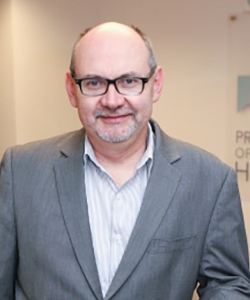Woodlawn reinvestments are a model for preserving affordable housing
Published in Crain’s Chicago Business here
Discussions about the Obama Presidential Center’s potential impact on housing affordability in Woodlawn often focus on residents’ fears of displacement and an uncertain future, but it might be more useful to look at the past decade for models of what can be done moving forward.
For decades Woodlawn was an undervalued and underinvested community – too many empty lots, low market rents, the lack of a full-service grocery store, few jobs and fewer amenities.
Over the past decade, however, reinvestment sparked by a $30 million Obama-era federal grant has begun a turnaround in the community – increasing property values, new homeownership opportunities, new jobs, and attracting that long-sought grocery store and other smaller new businesses, all the while protecting and expanding affordable housing opportunities.
POAH’s experience in Woodlawn offers some key lessons. As a nonprofit mixed-income housing developer, we helped facilitate home ownership opportunities and new rental development while also implementing the most cost-effective strategy of all -- the preservation of existing affordable housing.
Since 2009 POAH has acquired more than 1,000 apartments here, the lion’s share in East Woodlawn where gentrification pressures are greatest.
It’s not easy work. In every case successful preservation has required partnerships -- with public funders, of course, but also with community organizations, residents and even with other developers. And, of course, money.
Most recently we teamed with the Jonathan Rose Companies to buy the 318-unit Jackson Park Terrace immediately across Stony Island from the OPC. The property’s asking price exceeded what POAH could afford alone. New York-based Rose, meanwhile, wanted to underscore its commitment to preservation and resident support and invited POAH to join its bid. Today the property is in the hands of two preservation-focused partners for the foreseeable future.
A few blocks south, 20-story Island Terrace required another approach. There, lining up early support from city, state and federal funders helped chart a path to a purchase and recapitalization plan that will begin in early 2023 and result in more affordable apartments than exist today overlooking Jackson Park.
There are more modest examples as well. In 2019, more than a year before his death, the Rev. Leon Finney, Jr., sold the Fr. Martin Farrell House on East 65th Street to POAH, securing long-term affordability for 59 senior apartments.
Just north of there, long-time community and affordable housing activist Mattie Butler and Woodlawn East Community and Neighbors (WECAN) looked to POAH to revitalize 106 apartments serving people at risk of homelessness. Today, following an award-winning rehabilitation, the renamed Butler Apartments secure her legacy with service-enriched supportive housing on Kimbark and Dorchester Aves.
Every building preserved used multiple tools, including short-term acquisition funding, followed by longer-term support from City Hall, the state, the U.S. Department of Housing and Urban Development (HUD), and others; creative partners committed to the properties’ long-term health; open communication with residents worried about change; and public messaging reinforcing the vital role preservation plays in a community’s vitality and ecosystem.
What’s known as NOAH, or naturally occurring affordable housing, is often harder to protect. Owners of buildings that operate without subsidy but have generated only modest revenues for years can hardly be blamed for raising rents as a neighborhood improves, or for selling to investors. But as those modest rents disappear, lower-income residents often are priced out.
Protecting these NOAH properties requires a different toolset – low-interest loans, property tax incentives, etc., and attention from the City, county and lenders such as Chicago’s Community Investment Corp., which focuses on this inventory. The City adopted the Woodlawn Preservation Ordinance to help protect this essential community asset, and that work is ongoing.
Preservation is obviously central to a healthy Woodlawn but remains just one critically important piece of the puzzle. With acres of vacant land to build on, new construction should transform Woodlawn’s streetscape in coming years. Here too balance is possible. As much of that land – along 63rd Street and on residential blocks – is owned by the City and Cook County, any surge in higher-end housing can be both welcomed and balanced with moderately-priced options for middle-income households.
And as the housing stock increases, even more commercial activity will follow. Here too experience shows that, with the right players and incentives, large-scale operators such as Jewel-Osco on 61st Street can coexist with smaller entrepreneurs such as Daley’s Restaurant two blocks away.
Balance. Committed partners. Creativity. Money. New and long-time residents. For a thriving Woodlawn today and tomorrow, they all matter.
Rendering from Obama Foundation

